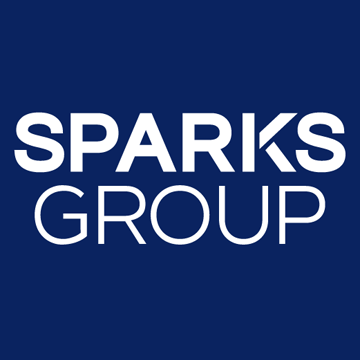
Onboarding is the process of bringing new employees into a company – helping them to acclimate and become part of the new environment. It is important not to confuse orientation with onboarding – orientation is an event, focused on the exchange of information and paperwork related to employment. Orientation is only a part of the onboarding process – and onboarding, done well, can have a significant impact on the new hire, and on company results.
Companies with strong onboarding programs report outcomes including:
- Retention improved by 82%1
- Productivity improved by 70%2
- Employee engagement improved by 54%3
Related: Remote Working Now is an Investment in the Future
However, even those companies that understand the positive impact of a strong onboarding program find it difficult to create and deliver a consistently good onboarding experience. Gallup recently found4 that only 12% of new hires confirm that their company does a good job of onboarding. Challenges include confusion over onboarding roles and responsibilities, involving managers in the process, and integrating the new hire into the employee culture.
As difficult as it is to effectively onboard a new employee to the company when they are on site, complexities are increased further when onboarding remote employees. How can a company ensure that a new employee feels like a part of the team when they aren’t physically present for the experience?
To successfully onboard remote employees, a company should consider:
1. Start Before Day One.
For 47% of companies5 , onboarding begins when the candidate first accepts a job, rather than on the first day of employment. As soon as an offer is accepted, an employee may be granted access to an online onboarding portal. This may give access to required paperwork (W-4 and I-9 forms), information about benefits programs, even friendly messages from managers and team members.
An early start to onboarding is even more important for a remote worker. It not only alleviates the administrative burden of first-day paperwork, it also connects the new hire with their peers ahead of their start date.
2. Continue Past Week One.
For 35% of companies, onboarding ends either on the first day or sometime in the first week. While many HR professionals believe that onboarding should last at least three months, there is research6 indicating that extending onboarding through the first year of employment may carry significant benefits.
Extended onboarding – to the first year – takes a significant amount of planning and strategizing, even more so for remote employees. Creating an extended onboarding process involves setting up regular check-ins, with a review of goals and accomplishments at the 3, 6, and 9-month markers. Regular communication facilitates engagement and builds connections between employees, managers, and HR, while regular review of goals and accomplishments connects the employee with the larger organization, it’s vision and mission.
It can be easy for an employee to be overlooked when they are not physically located at the office; so, it is critical to ensure that remote employees are a part of the extended onboarding strategy: from communications, to training, to regular check-ins and reviews.
Related Reading: Maximize the Success of Employee Performance Reviews
3. Be Consistent.
Inconsistencies in the onboarding process lead to gaps in knowledge between employees, teams and departments. Creating a standardized process is key to being efficient and effective – and technology can be extremely helpful in this regard. Onboarding technology not only ensures that necessary forms are received, and information disseminated; it also ensures a consistent process for new employees no matter where they are located, in-office or remote.
4. Define Roles and Responsibilities for On-boarding.
The manager thinks onboarding is HR’s responsibility, HR thinks that the manager is taking the lead, and the new hire has no idea what to expect from whom. A transparent, standardized onboarding process is effective because it ensures that everyone gets the same, complete information; but it also clarifies responsibilities so that nothing important is overlooked.
Creating clearly defined roles and responsibilities for the onboarding process also gives a new hire a good impression of the company and opens lines of communication to ensure that they remain active and engaged in the process.
Related Reading: Setting Expectations During Employee Onboarding
5-Invest in Success.
One element to consider is ensuring that the new hire has the tools they need to succeed in their new position and become productive quickly. For employees that work in the office, it is expected that the company will provide a workspace and required hardware (computer, etc.) for the job. They also receive access to programs and applications, as well as any necessary training for using them. (Items below are examples, not recommendations or endorsements of one tool over another. Review the features available and choose whatever works best for your company.)
Standard telecommuting tools include:
- Computer / laptop
- Headset
- Desk / chair / etc.
Helpful applications include:
- Team chat (Slack, HipChat)
- Videoconferencing (Microsoft Teams, Zoom)
- Project Management (Asana, Jira, Trello)
- Productivity (ToDoist, IDoneThis)
- Cloud Storage and Collaboration (Google Drive, Dropbox)
Don’t assume that your new hire is familiar with the technology that is in place at your organization. Ensure that they have the necessary tools and training to be successful at their job without being asked, to prevent them from feeling frustrated or becoming disengaged. Best practices include having a checklist to verify that tools and training have been provided, pre-scheduling check-ins with key team members, and maintaining open lines of communication both formal and informal.
6. Set Clear Expectations.
The better everyone understands performance expectations for the new hire, the easier future conversations about their performance will be. Key stakeholders - HR, the direct manager, the department head, and the employee – should all have the same understanding of the metrics that will be used to evaluate the employee. This should be discussed openly during onboarding, to ensure total transparency between new hire and company.
7. Involve the Manager.
While onboarding is often considered a function of human resources, a recent study7 found that 72% of new hires believe one-to-one time with their manager is the most important part of onboarding.
Involving the manager in remote onboarding may be even more difficult than with on-site employees, as there is no casual ‘drop-in and say hello’ interaction with a remote employee. However, video conferencing with a manager can be very effective, for regularly scheduled meetups or even a casual chat during onboarding. It opens the lines of communication between manager and direct report, and gives the new hire the chance to ask questions, seek clarification, or voice concerns when needed.
8. Have an Ambassador.
Providing an ambassador, or buddy, for a new hire can improve the onboarding process significantly. According to HCI8, 87% of employees say that buddy programs improve new hire proficiency in their new position.
While this may not be intuitive in a remote situation, a virtual buddy can be just as effective as an in-person buddy for a remote employee. Someone to answer questions, relay concerns, or even just to take a video coffee break with, can make a significant positive impact on the new hire experience.
The buddy system can start on or even before day one, even with remote workers. One way to do this is with a welcome package, delivered to the new employee’s home. This can include necessities, such as their computer and office equipment; and it can also include personalized items - a handwritten welcome note from the team, a gift (corporate logo tee shirt or notebook), and contact information for their buddy.
9. Evaluate and Improve.
Getting feedback on onboarding processes, and applying that feedback to continuous improvement, is an important part of long-term success. 89% of HR leaders in a recent survey[9] agreed that ongoing employee feedback has a positive impact on their business overall.
As the workforce becomes more dispersed, with more people working remotely part time or full-time, an effective remote onboarding process will become more critical. A consistent, engaging onboarding process that involves key stakeholders can make the remote hiring process better: improving retention, as well as new hire productivity and engagement.
Sparks Group is a nationally-awarded agency with in-depth experience across various industries and local markets. Connect with our dedicated recruiting experts to streamline your recruiting process and access top-quality candidates.
Sources:
- https://www.saplinghr.com/10-employee-onboarding-statistics-you-must-know-in-2020
- https://typelane.com/10-mind-blowing-employee-onboarding-statistics/
- https://www.shrm.org/resourcesandtools/hr-topics/talent-acquisition/pages/dont-underestimate-the-importance-of-effective-onboarding.aspx
- https://www.gallup.com/workplace/244100/scary-numbers-organization-suite.aspx?g_source=link_WWWV9&g_medium=TOPIC&g_campaign=item_&g_content=6%2520Scary%2520Numbers%2520for%2520Your%2520Organization%27s%2520C-Suite
- https://www.statista.com/statistics/1026385/begin-onboarding-programs-organizations-united-states/
- https://www.opm.gov/WIKI/uploads/docs/Wiki/OPM/training/Getting_On_Board__A_Model_for_Integrating_and_Engaging_New_Employees-[2008.05.12].pdf?_ga=2.42779686.202252721.1551212165-1312735960.1551212165
- https://www.psycruit.com/blog/onboarding-statistics-2020
- https://www.saplinghr.com/10-employee-onboarding-statistics-you-must-know-in-2020
- https://www.globoforce.com/press-releases/globoforce-shrm-human/





